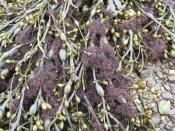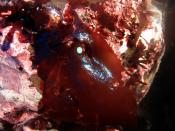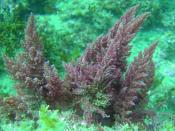Phyla of Protists
*Move using pseudopodia
*Have double shells made of silica
*Photosynthetic protists; can be multicellular
*Move using flagella
*Move using cilia
*Fungus like protists
*Form resistant spores
An interesting group of protists consists of amoebas and forams. These protists are distinguished by their unique form of locomotion, in which they use extensions of cytoplasm. Amoebas and forams are unicellular heterotrophs.
Amoebas, members of the phylum Rhizopoda, are protists that live in fresh and salt waters and are especially abundant in soil. Because there is no cell wall or flagella, it is extremely flexible. It moves through its environment using extensions of cytoplasm called pseudopodia, from the Greek words pseudo, meaning "false," and podium, meaning "foot." Meiosis and sexual reproduction do not occur in amoebas. They reproduce by fission, simply dividing into two new cells.
Forams, members of the phylum Foraminifera, are marine protists that live in sand or attached to other organisms or rocks.
Forams are characterized by their porous shells, called tests. Tests usually have many chambers arrayed in a spiral shape resembling a tiny snail and consisting of organic material that contains grains of calcium carbonate. Long, thin projections of cytoplasm extend through the pores in the tests to aid in swimming and in capturing prey.
Diatoms, members of the phylum Baccillariophyta, are photosynthetic, unicellular protists with unique double shells made of silica. Their shells are like small boxes with lids, one half fitting inside the other. Abundant in oceans and lakes, diatoms are important food producers. Diatoms can have one of two types of symmetry: radial (like a wheel) or bilateral (two-sided). Sexual reproduction in diatoms is rare.
The kingdom Protista also contains some of the fastest growing and most photosynthetically productive organisms-the algae. The three kinds of algae are green algae, red algae, and...


